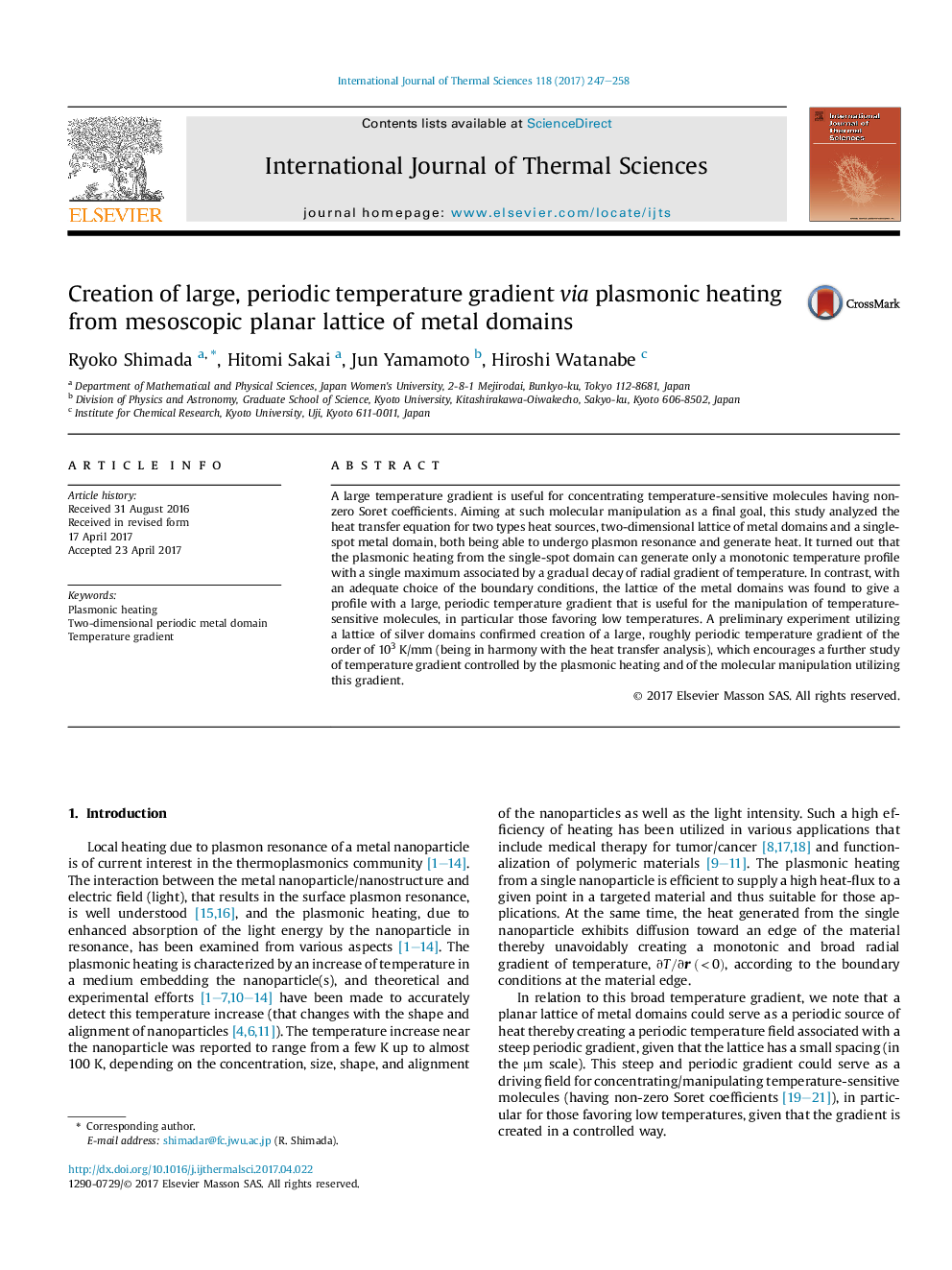| Article ID | Journal | Published Year | Pages | File Type |
|---|---|---|---|---|
| 4995276 | International Journal of Thermal Sciences | 2017 | 12 Pages |
Abstract
A large temperature gradient is useful for concentrating temperature-sensitive molecules having non-zero Soret coefficients. Aiming at such molecular manipulation as a final goal, this study analyzed the heat transfer equation for two types heat sources, two-dimensional lattice of metal domains and a single-spot metal domain, both being able to undergo plasmon resonance and generate heat. It turned out that the plasmonic heating from the single-spot domain can generate only a monotonic temperature profile with a single maximum associated by a gradual decay of radial gradient of temperature. In contrast, with an adequate choice of the boundary conditions, the lattice of the metal domains was found to give a profile with a large, periodic temperature gradient that is useful for the manipulation of temperature-sensitive molecules, in particular those favoring low temperatures. A preliminary experiment utilizing a lattice of silver domains confirmed creation of a large, roughly periodic temperature gradient of the order of 103Â K/mm (being in harmony with the heat transfer analysis), which encourages a further study of temperature gradient controlled by the plasmonic heating and of the molecular manipulation utilizing this gradient.
Related Topics
Physical Sciences and Engineering
Chemical Engineering
Fluid Flow and Transfer Processes
Authors
Ryoko Shimada, Hitomi Sakai, Jun Yamamoto, Hiroshi Watanabe,
